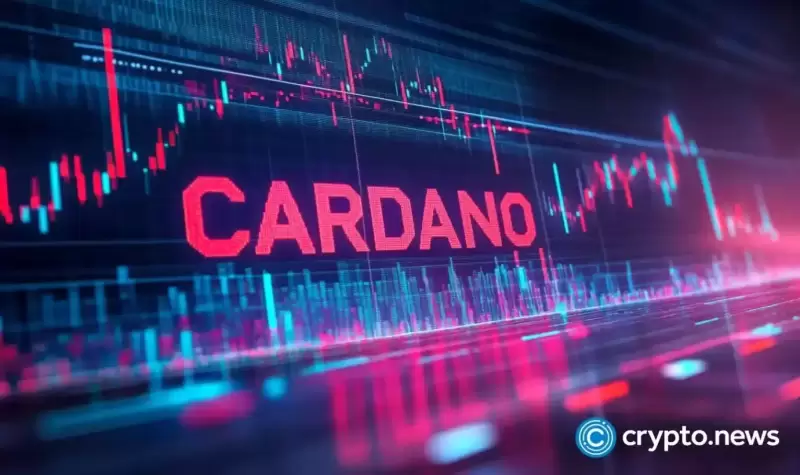 |
|
 |
|
 |
|
 |
|
 |
|
 |
|
 |
|
 |
|
 |
|
 |
|
 |
|
 |
|
 |
|
 |
|
 |
|
Cryptocurrency News Articles
The Resurgence of Tariffs Under President Donald Trump's Administration Has Sent Ripples Through Financial Markets
Mar 30, 2025 at 11:06 pm
This article explores the intersection of Trump's economic policies, market dynamics, and cryptocurrency regulation.

The recent resurgence of tariffs under President Donald Trump’s administration has sent ripples through financial markets, including the volatile world of cryptocurrency.
As Bitcoin holders and potential investors speculate on its future, the intersection of Trump’s economic policies, market dynamics, and cryptocurrency regulation presents a complex scenario.
Trump’s Tariffs and the Crypto Market
Following Trump’s return to the White House, a series of policy shifts have taken center stage, including mass deportation plans and economic decisions impacting global trade.
One of the most contentious moves has been the imposition of tariffs: 25% on imports from Canada and Mexico and 20% on Chinese goods.
While these trade barriers are intended to strengthen the domestic economy, they also risk fueling inflation and disrupting international trade.
Amidst these changes, cryptocurrency has emerged as a focal point.
Trump has pledged deregulation efforts to bolster the value of Bitcoin and other digital assets, signing an executive order establishing a Strategic Bitcoin Reserve and a Digital Asset Stockpile.
This move aims to accumulate Bitcoin through government-forfeited crypto assets, likened by David Sacks, the White House AI and crypto advisor, to a “digital Fort Knox.”
Bitcoin’s Initial Market Response
The crypto market has reacted unpredictably to these developments. In December 2024, when the US Consumer Price Index (CPI) registered a 2.9% annual increase, Bitcoin surged by 2%, rising by $1,500 to reach $98,000.
This growth reflected its sensitivity to inflationary trends.
However, recent months have seen a different trend. Fears of economic instability, coupled with large-scale movements of cryptocurrency assets, have triggered massive sell-offs.
Between March 10 and March 11, the crypto market saw $1 billion in liquidations, sending Bitcoin to a four-month low. Factors contributing to this downturn include:
Mt. Gox Debt Settlements
The once-dominant crypto exchange moved tens of thousands of Bitcoin, spurring liquidation fears.
Ethereum Whale Sell-Offs: Major ETH holders made large transactions, further shaking market confidence.
Recession Warnings from Trump: His statements on an impending economic downturn sent shockwaves through both stock and crypto markets.
Bitcoin as a Hedge Against Tariffs?
Despite its volatility, Bitcoin has demonstrated its ability to act as a hedge against economic turmoil.
Its correlation with the NASDAQ has fallen from 72% to 40%, suggesting that it is gradually decoupling from traditional financial markets.
Historically, Bitcoin has functioned as “digital gold”—a refuge during economic crises. In March 2023, during the peak of the US banking crisis, Bitcoin’s price rose while other assets plummeted.
Analysts suggest that while altcoins like Ethereum remain closely tied to the tech sector, Bitcoin may increasingly serve as a hedge against geopolitical and economic instability.
Looking Ahead: Bitcoin’s Role in a Tariff-Driven Economy
The impact of US tariffs on Bitcoin’s trajectory remains uncertain. In the short term, higher inflation and market volatility may lead to price swings. However, in the long run, Bitcoin’s appeal as a decentralized asset could strengthen if tariffs fuel economic instability.
Disclaimer:info@kdj.com
The information provided is not trading advice. kdj.com does not assume any responsibility for any investments made based on the information provided in this article. Cryptocurrencies are highly volatile and it is highly recommended that you invest with caution after thorough research!
If you believe that the content used on this website infringes your copyright, please contact us immediately (info@kdj.com) and we will delete it promptly.
-

- The Human Rights Foundation (HRF) has announced a new round of grants from its Bitcoin Development Fund
- Apr 01, 2025 at 11:00 pm
- The Human Rights Foundation (HRF) has announced a new round of grants from its Bitcoin Development Fund, distributing 1 billion satoshis (10 BTC) to over 20 projects worldwide.
-

-

-

-

-

-

-

-



























































